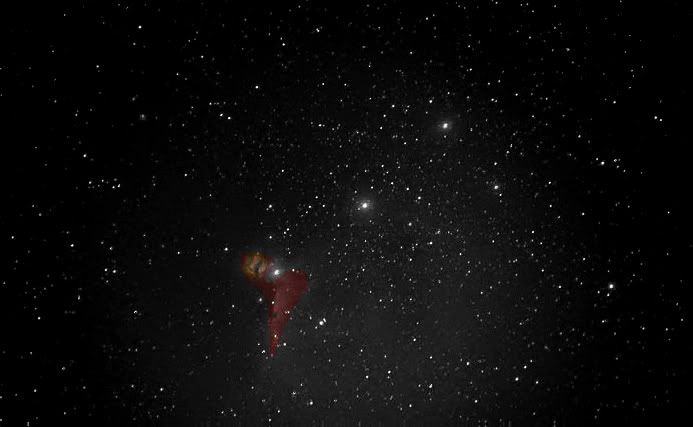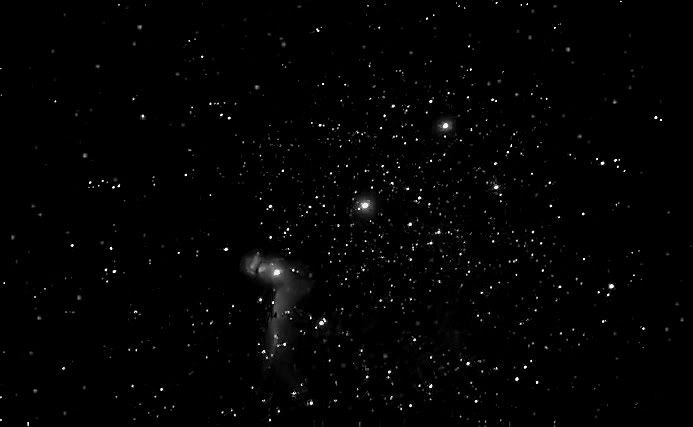Post by Andy Mac on Mar 8, 2008 20:50:24 GMT
This is my first attempt at digital imaging - and using a laptop - and using Noel Carboni's Astronomy Tools. Up until recently, all my images have been strictly with 35mm film - so this was like starting all over again.
I decided to go for an easy target so I could tell myself that I'd got a result with this whole new set up.
The object I was really after, Barnards Loop (which appeared in the original stack), had to be sacrificed to get rid of the vignetting that I encountered. There were also some strange red & green stars in the original shot which I assume is a pixel thingy (didn't take any dark frames which I may do next time). I have taken the lazy route here and 'de-saturated' them out.
Although I've lost Barnards Loop, you can still make out both the Flame and IC434 in this shot.
One thing that drove me mad with the laptop was the lack of a mouse. The way you move the cursor around with your finger is NOT for me. Hopefully the mouse I've ordered will arrive on Monday.
For this shot I used my AstroTrac camera platform, a modded 350D DSLR fitted with a 135mm lens set at f2.5 - and a stack of 12X5 minute exposures all of which were combined in DSS and touched up in PS - mainly using Noel's Astronomy Tools. The images were all filtered with my Lumicon Halpha filter, too.
The image has various faults which are really down to my cack-handed attempts at processing. But the more I practice and learn from others (I'm currently about halfway through Michael Covington's book on DSLR astro imaging), hopefully the better will be my results.
Anyway, for better or worse here is my result from last night. Firstly, a B/W version, followed by a colour version. I would have taken more subs but Orion was fast disappearing below the rooftops by around 9pm.


I decided to go for an easy target so I could tell myself that I'd got a result with this whole new set up.
The object I was really after, Barnards Loop (which appeared in the original stack), had to be sacrificed to get rid of the vignetting that I encountered. There were also some strange red & green stars in the original shot which I assume is a pixel thingy (didn't take any dark frames which I may do next time). I have taken the lazy route here and 'de-saturated' them out.
Although I've lost Barnards Loop, you can still make out both the Flame and IC434 in this shot.
One thing that drove me mad with the laptop was the lack of a mouse. The way you move the cursor around with your finger is NOT for me. Hopefully the mouse I've ordered will arrive on Monday.
For this shot I used my AstroTrac camera platform, a modded 350D DSLR fitted with a 135mm lens set at f2.5 - and a stack of 12X5 minute exposures all of which were combined in DSS and touched up in PS - mainly using Noel's Astronomy Tools. The images were all filtered with my Lumicon Halpha filter, too.
The image has various faults which are really down to my cack-handed attempts at processing. But the more I practice and learn from others (I'm currently about halfway through Michael Covington's book on DSLR astro imaging), hopefully the better will be my results.
Anyway, for better or worse here is my result from last night. Firstly, a B/W version, followed by a colour version. I would have taken more subs but Orion was fast disappearing below the rooftops by around 9pm.












